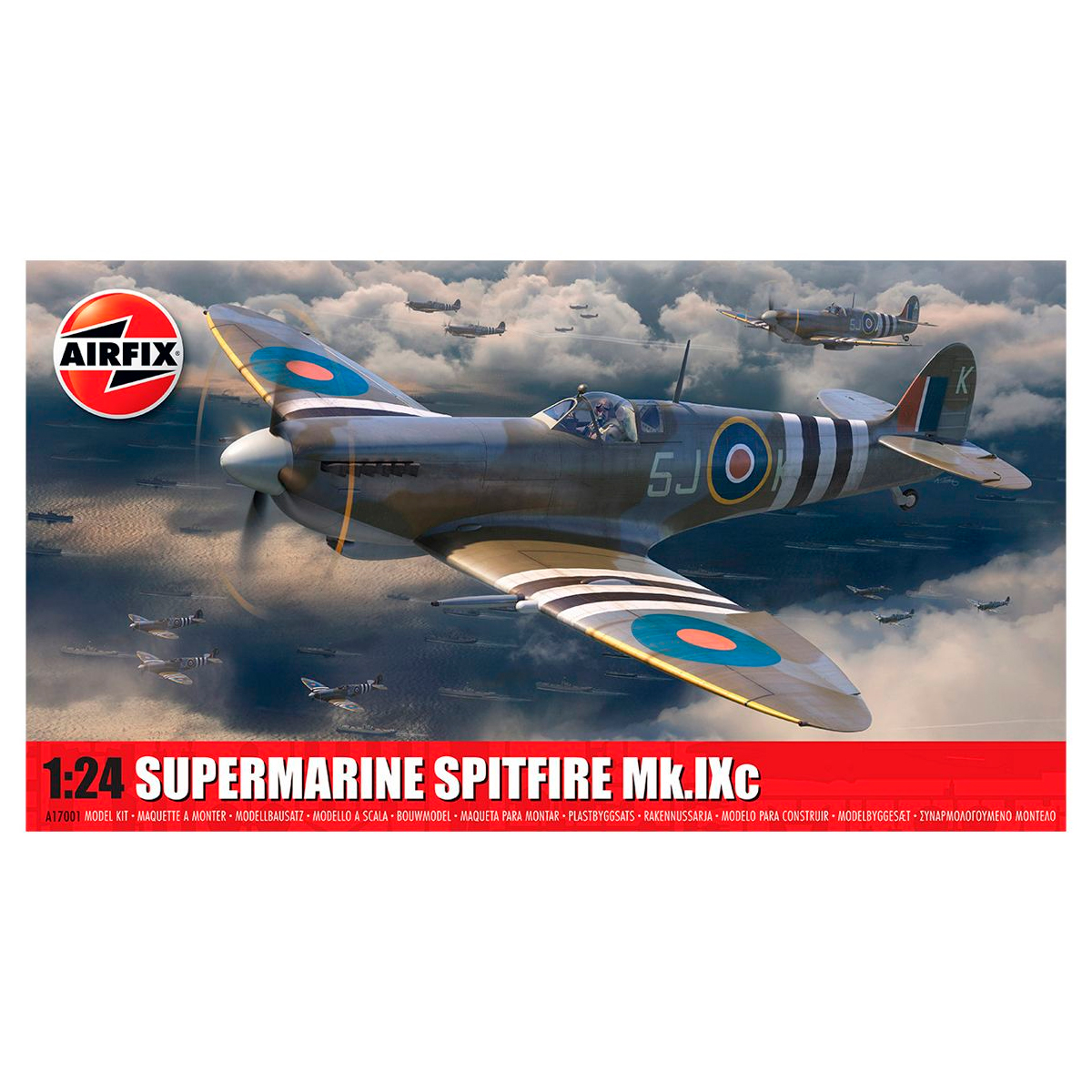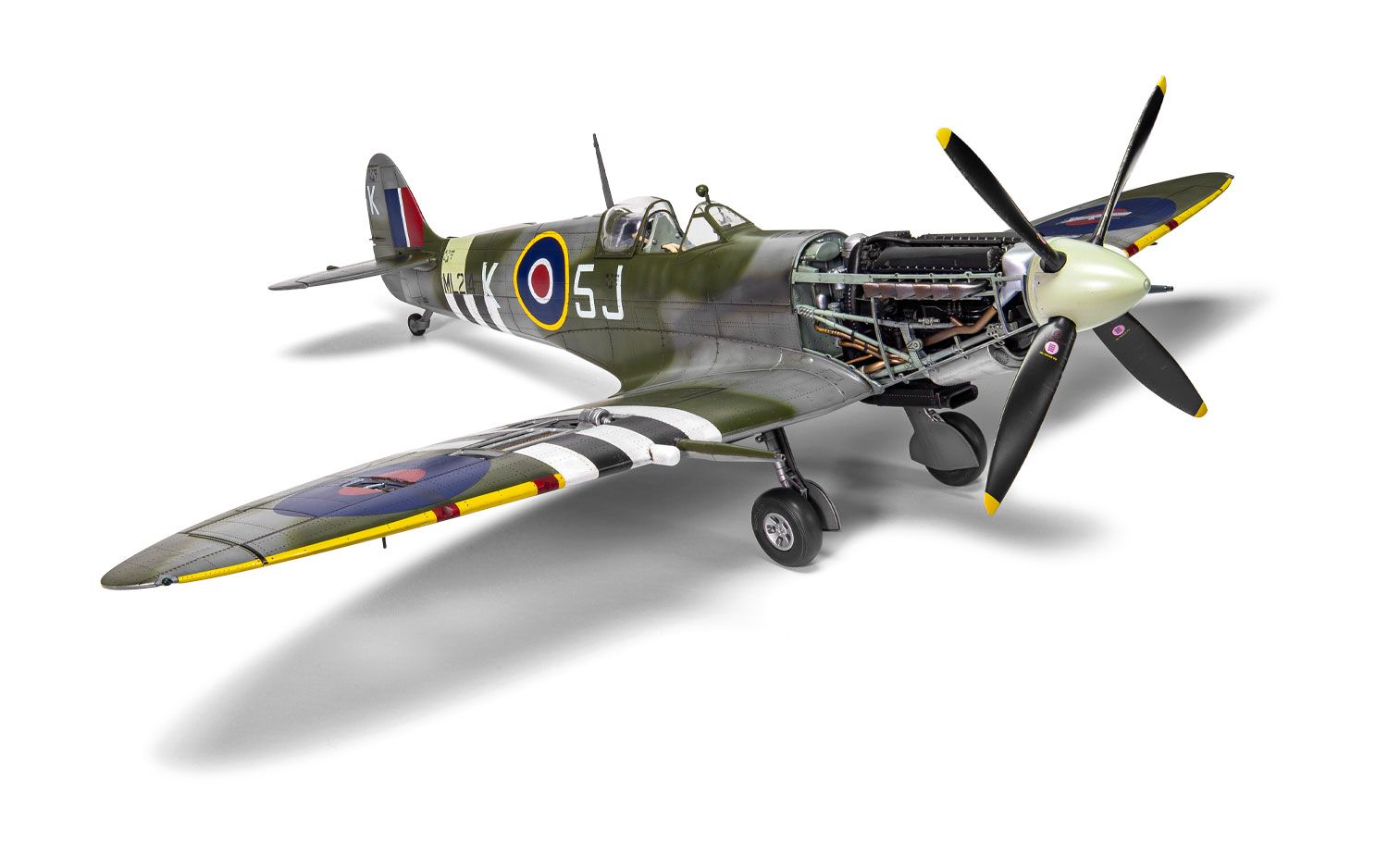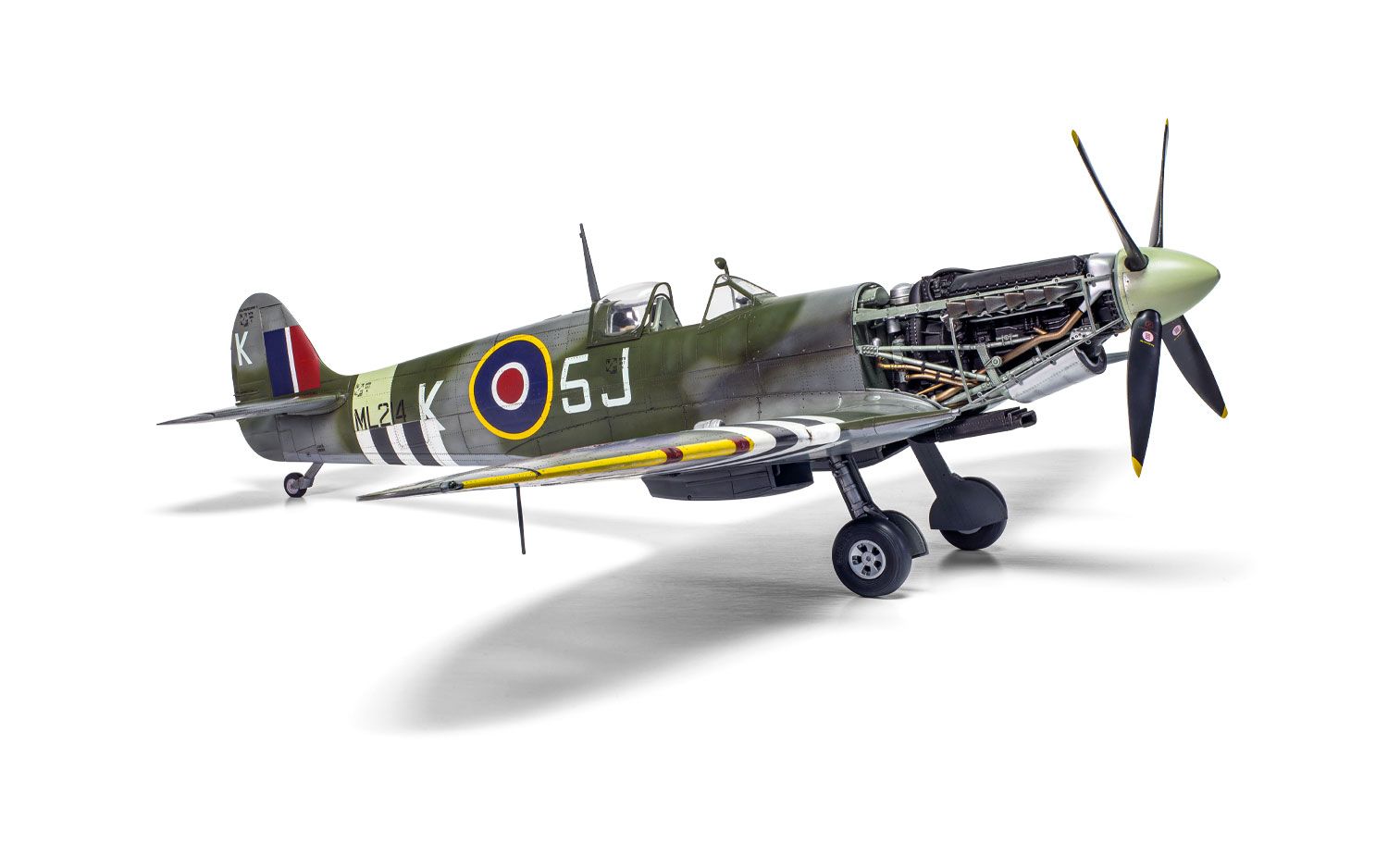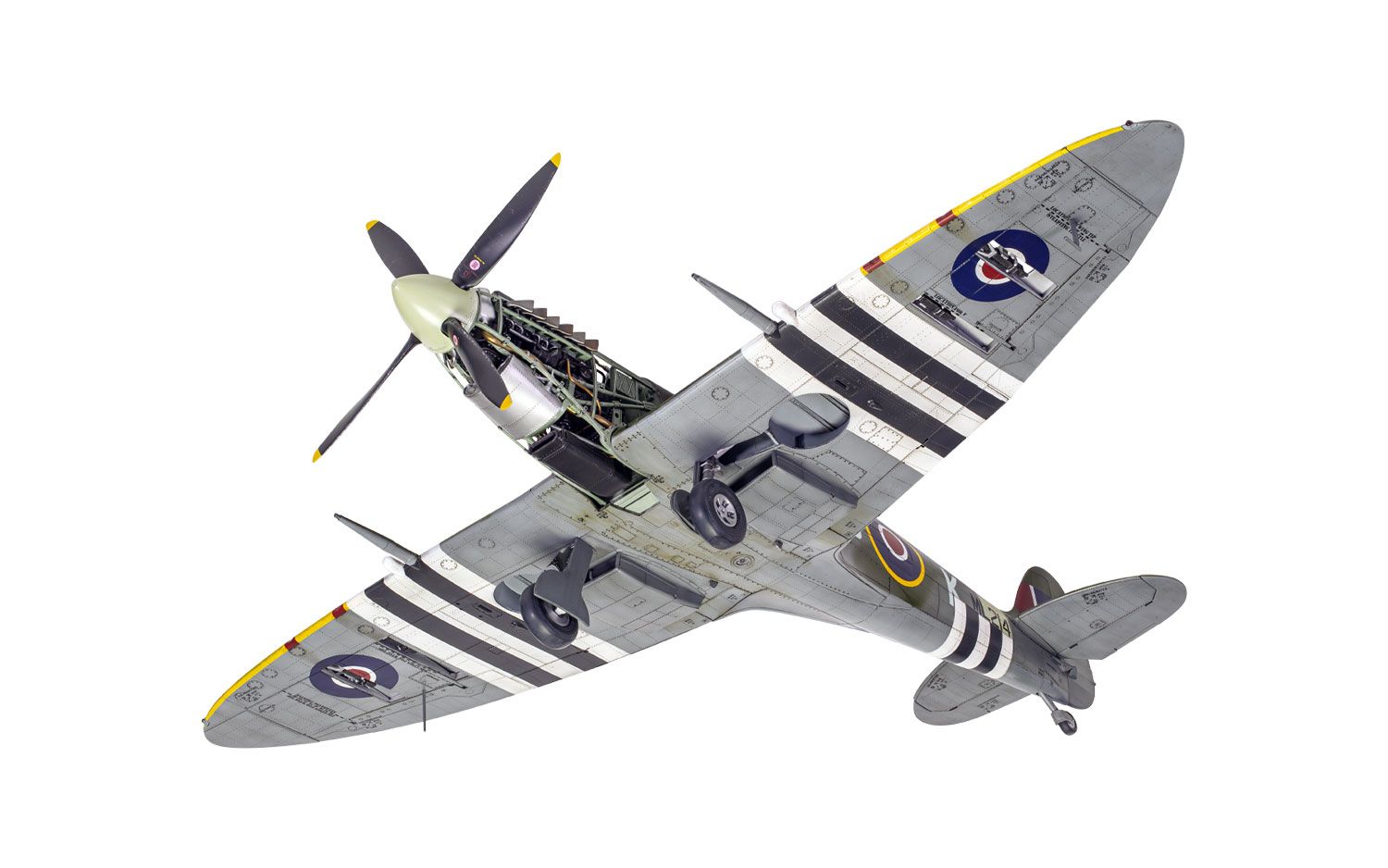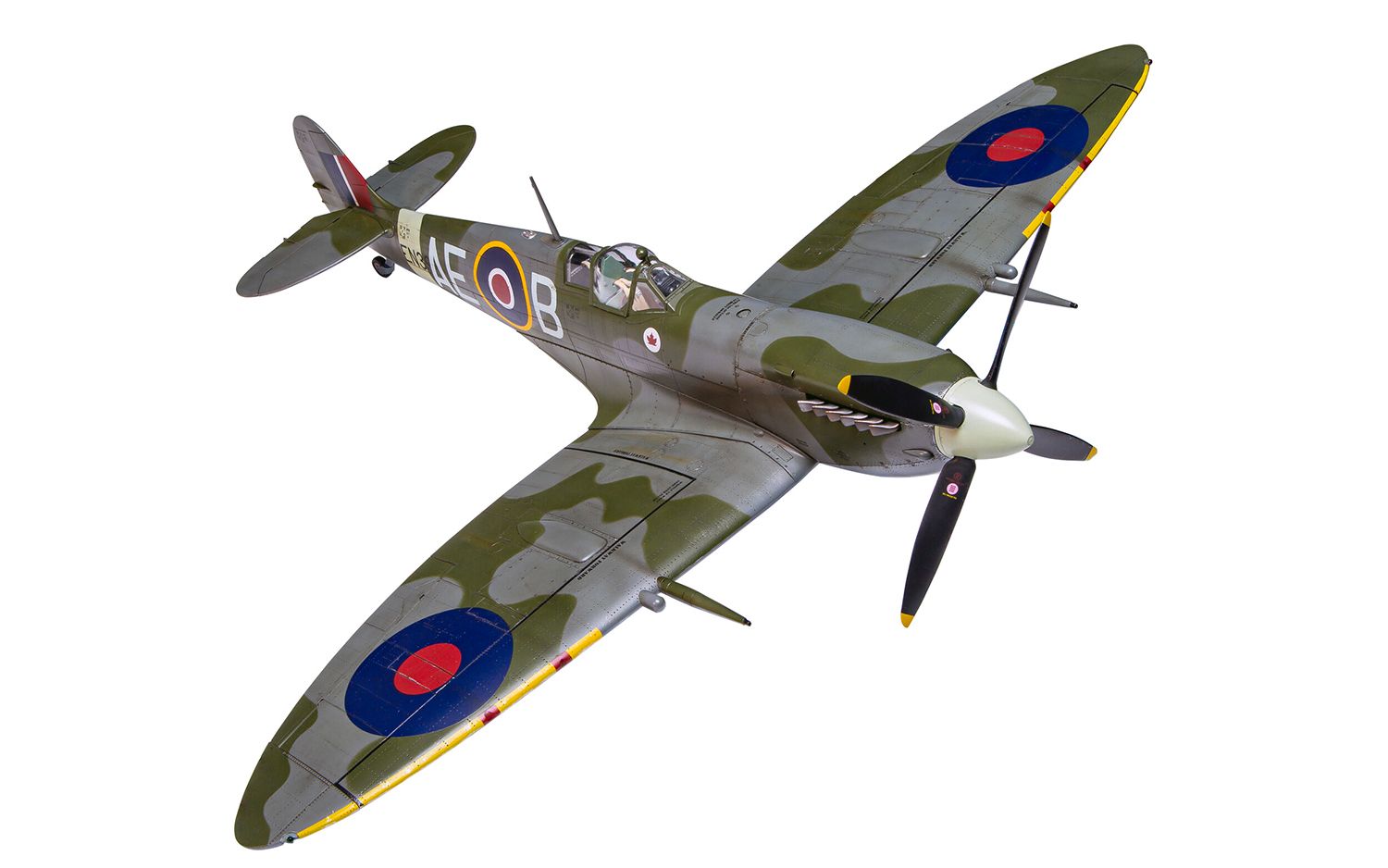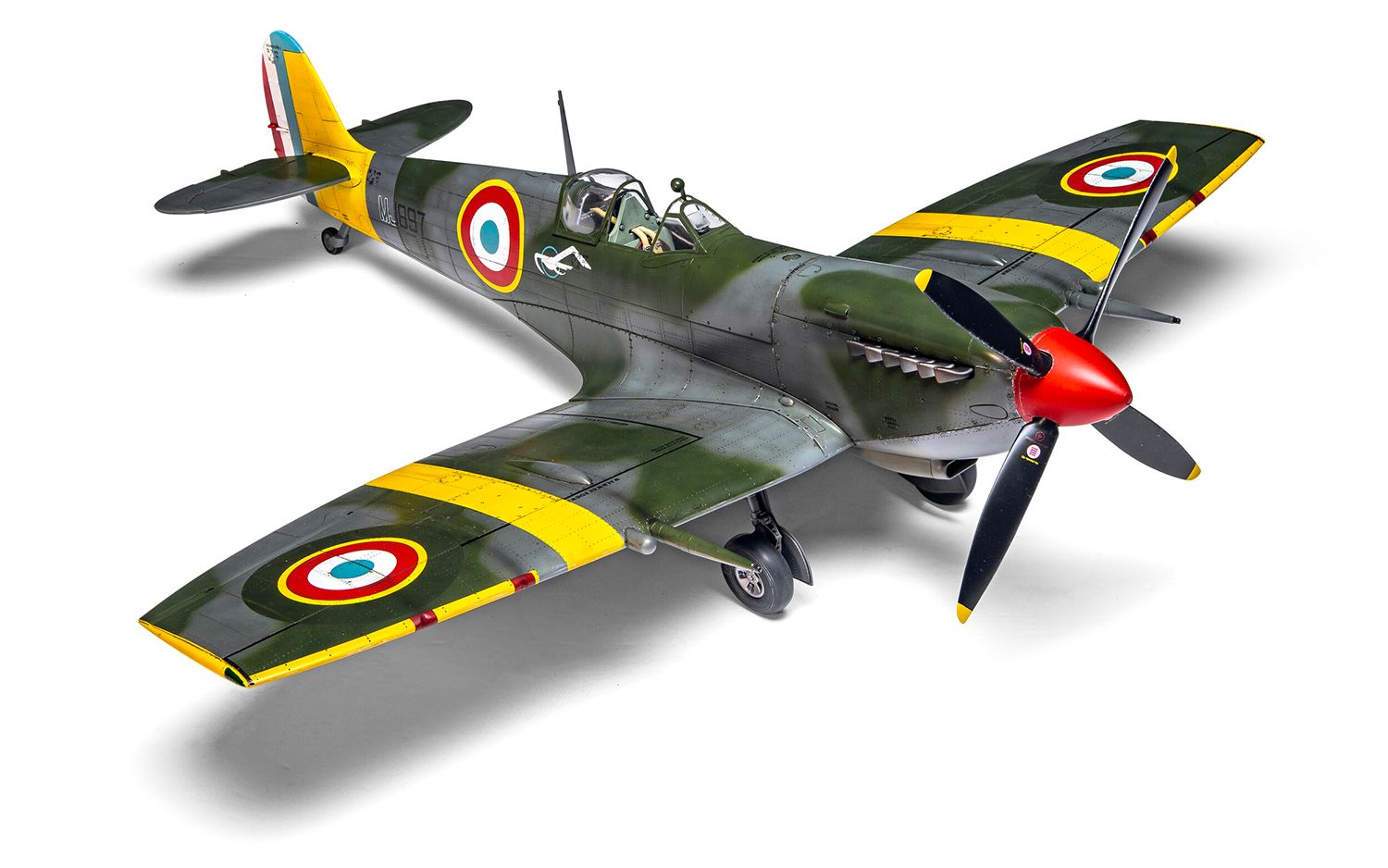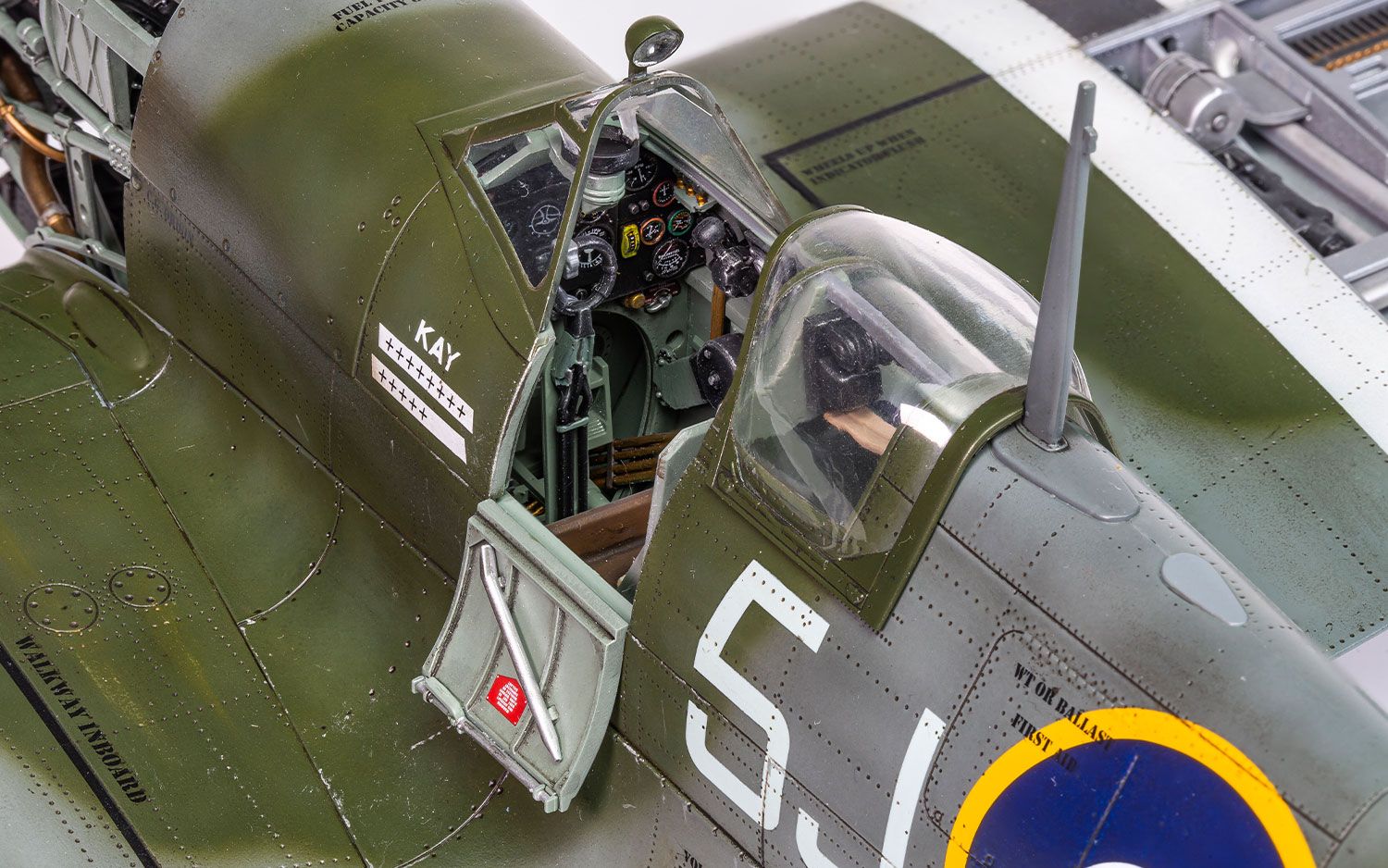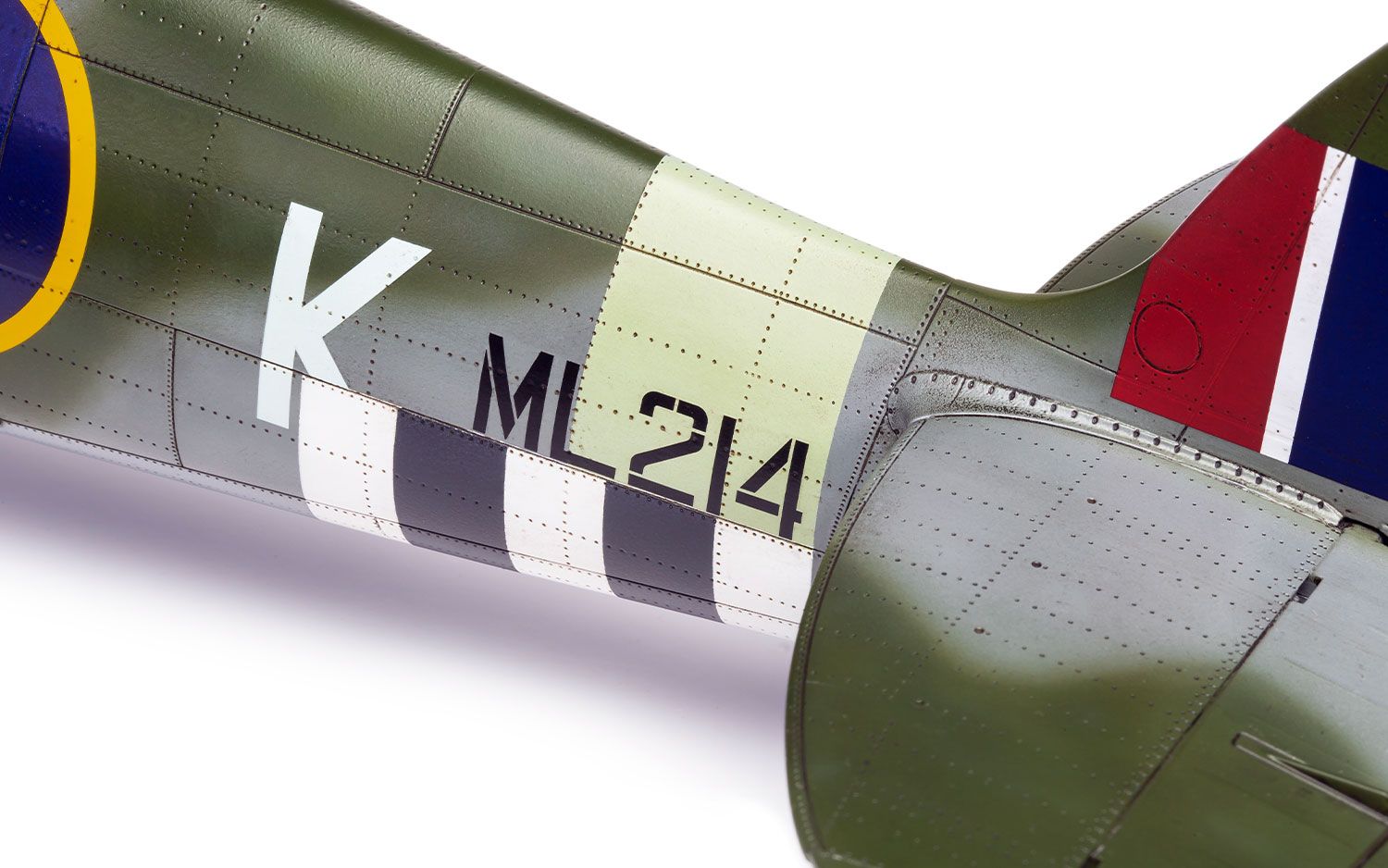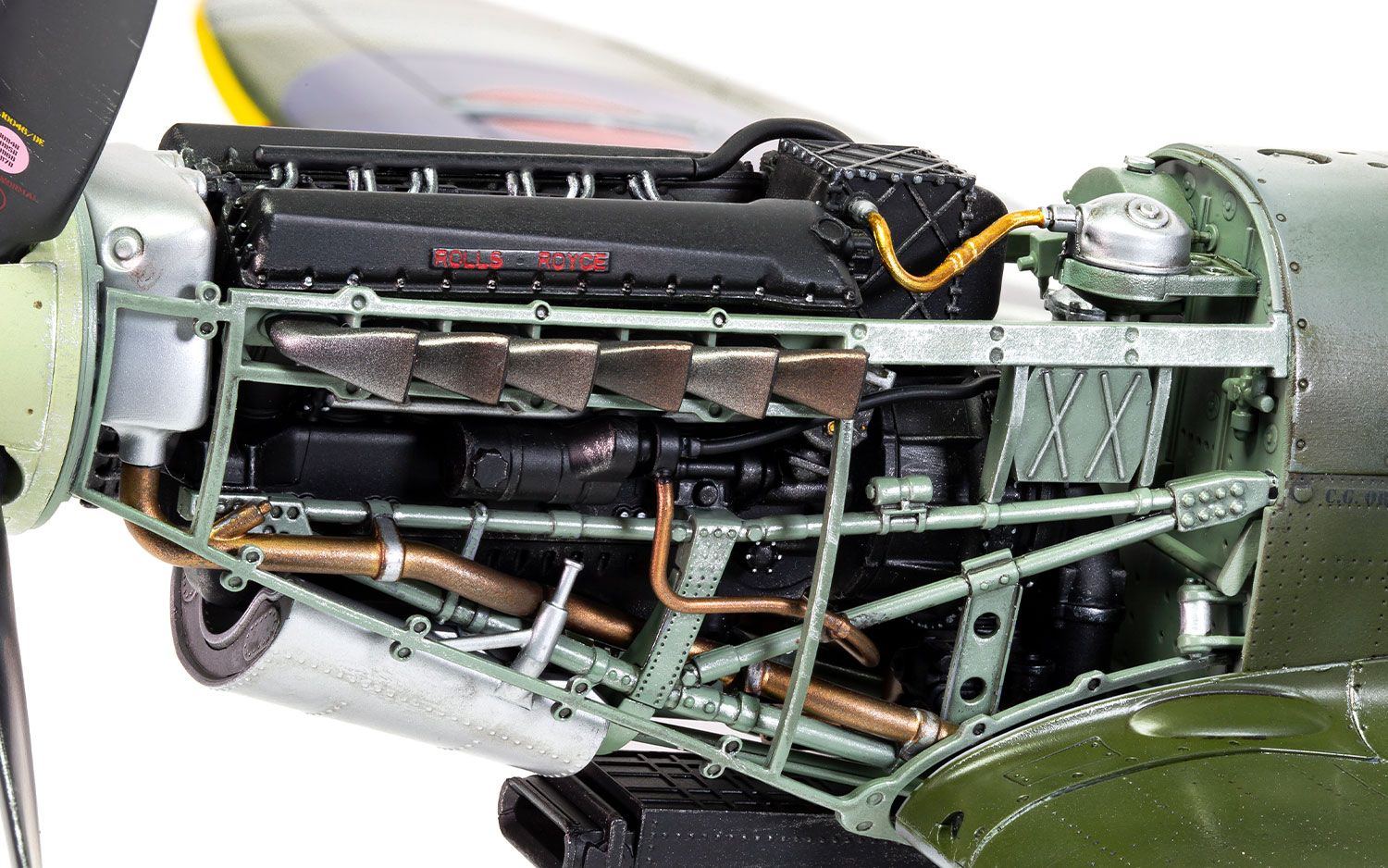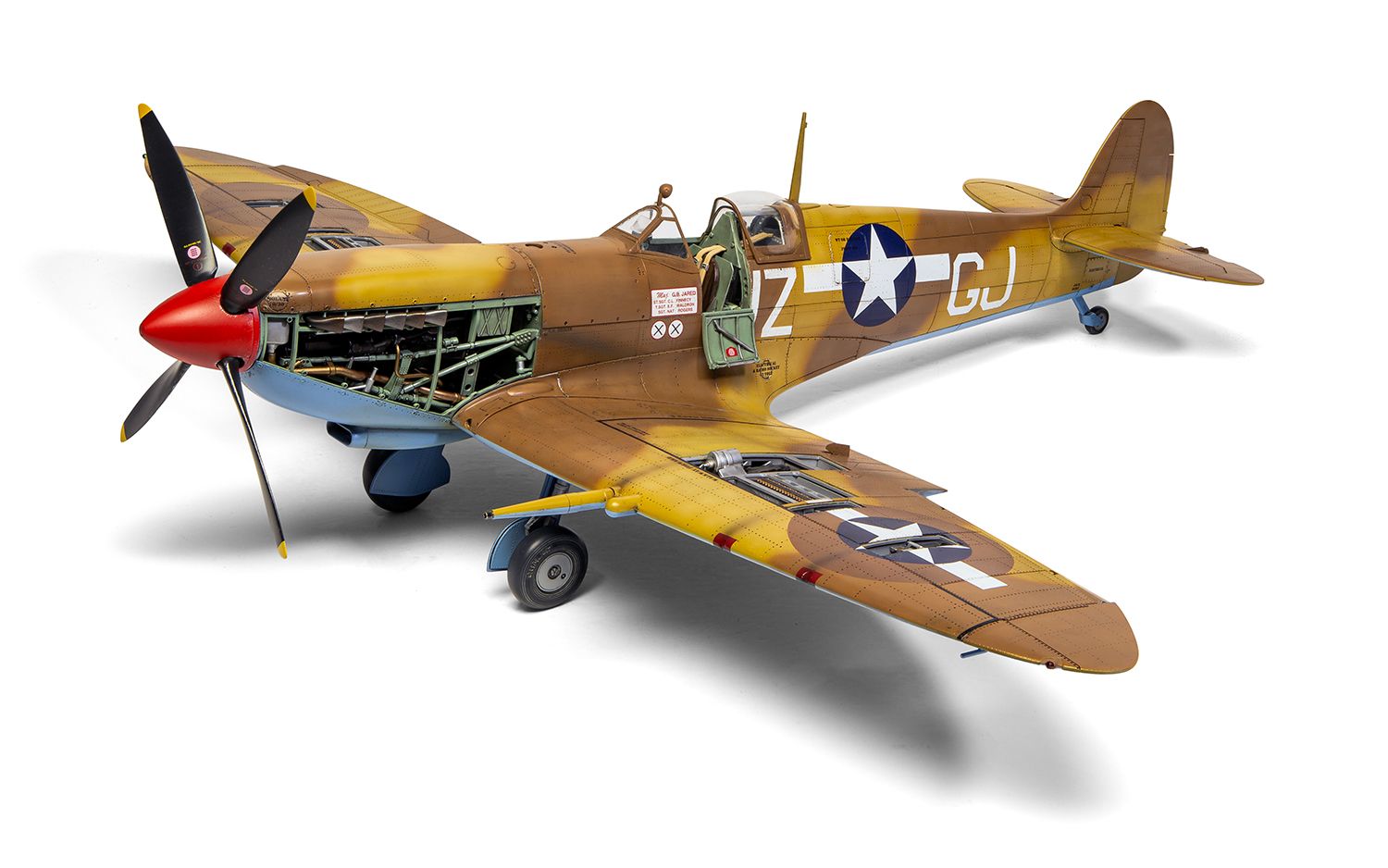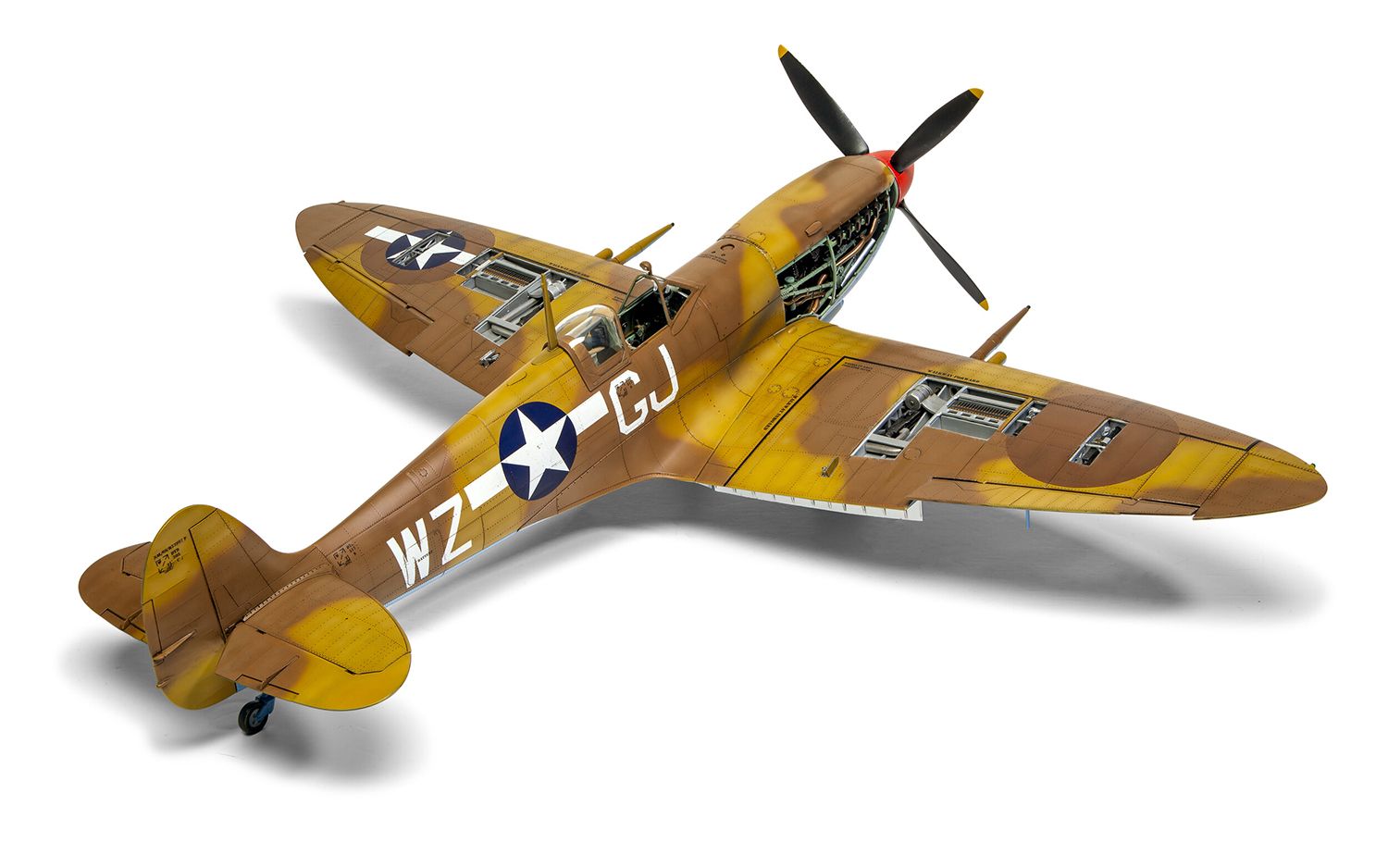Supermarine Spitfire Mk.Ixc 1/24
107,95€
Only 1 left in stock

*Please check our Privacy Policies to see how to we use your personal data.
*Por favor revisa nuestra Política de Privacidad para ver como tratamos tus datos personales
In the world of aviation, is there any aircraft which can even come close to matching the iconic status the Supermarine Spitfire enjoys, a legacy which is as strong today as it was during the wartime years? A modern monoplane fighter aircraft which made its first flight from Eastleigh Aerodrome on 5th March 1936, the Spitfire would earn its legendary reputation during the Battle of Britain, when the pilots of the Royal Air Force stood defiantly against the overwhelming might of the all-conquering Luftwaffe, an aviation beacon of hope for a nation and its people during their darkest hour.
Elegant and graceful to look at, the Spitfire’s appearance masked the fact that this was a deadly fighting aeroplane and one which was adaptable enough to undergo almost constant development throughout the wartime years, allowing later marks of the fighter to post speeds which were almost 100 mph faster than the first machines to enter service. With a service career which extended well into the post war years, the Spitfire outlived all its aviation contemporaries and with over 22,000 Spitfires of all variants (including Seafires) eventually being built, Spitfires are still a regular sight at Airshow events all over the world, as an ever increasing number of restored airworthy aircraft continue to write the enduring Spitfire story. Even though the prototype Spitfire made its first flight over 85 years ago, the aircraft is still widely regarded as Britain’s most famous aircraft type and instantly recognisable to many millions of people the world over.
The Spitfire Mk.IX variant was arguably the most important mark of Spitfire in the entire production run and because of that, it is somewhat surprising to learn that it was actually something of a stop-gap development. The arrival of the Luftwaffe’s new Focke Wulf 190 fighter over the Western Front in August 1941 saw RAF Spitfire Mk.Vs operating over the Channel falling victim to the ‘Butcher Bird’ in ever increasing numbers and something had to be done. A major Spitfire upgrade was in progress, but the Mk.VIII was still some way off, as manufacturing facilities prepared their tooling jigs for the new aircraft, but there was a temporary solution. One of the major features of the new Spitfire was its use of a powerful new version of the Rolls Royce Merlin engine and it was proposed that fitting this new engine to a Spitfire Mk.V airframe would give the fighter a welcome performance boost.
The first 100 Spitfire Mk.IX fighters were actually Mk.Vc airframes adapted to take the new Merlin 61 two stage, two speed supercharged engine, with this combination producing a thoroughbred fighting aeroplane, one which was more than capable of challenging the FW190 and the latest ‘F’ variant of the Messerschmitt Bf 109. In fact, the new Spitfire was considered so successful that this would become the second most heavily produced variant in the entire production run and if including the aircraft powered by the licence built Packard Merlin 266 (Spitfire Mk.XVI) even eclipsed the Mk.V in production numbers. With further powerplant refinement taking place throughout the production life of this variant, the first Mk.IX Spitfires started to join RAF Squadrons from July 1942, with this famous mark of Spitfire going on to see service past D-Day and into the post war era. The last major Merlin engine powered variant of the Spitfire, this ’emergency stop-gap fighter’ actually became something of an aviation classic.
Tech Specs
Item Length – Without Packaging (cm) 39.7
Item Height – Without Packaging (cm) 16.08
Item Width – Without Packaging (cm) 46.9
How many pieces will be found in the box opened by the customer? 433
Item Scale 1:24
Contents: Sprues & decals
Number of Scheme options 4
Skill Level 4
Flying Hours 4
Wingspan (mm) 469
En el mundo de la aviación, ¿hay algún avión que pueda siquiera acercarse al estatus icónico del que goza el Supermarine Spitfire, un legado que es tan fuerte hoy como lo fue durante los años de la guerra? El Spitfire, un moderno avión de combate monoplano que realizó su primer vuelo desde el aeródromo de Eastleigh el 5 de marzo de 1936, se ganaría su legendaria reputación durante la Batalla de Inglaterra, cuando los pilotos de la Royal Air Force se enfrentaron desafiantes al abrumador poderío de la todopoderosa Luftwaffe, un faro aéreo de esperanza para una nación y su pueblo durante su hora más oscura.
Elegante y grácil a la vista, la apariencia del Spitfire enmascaraba el hecho de que se trataba de un avión de combate letal y lo suficientemente adaptable como para experimentar un desarrollo casi constante durante los años de guerra, permitiendo a las versiones posteriores del caza alcanzar velocidades de casi 160 km/h más rápidas que las primeras máquinas que entraron en servicio. Con una carrera de servicio que se extendió hasta bien entrada la posguerra, el Spitfire sobrevivió a todos sus contemporáneos de la aviación y, con más de 22.000 Spitfires de todas las variantes (incluidos los Seafires) construidos, los Spitfires siguen siendo una imagen habitual en los eventos Airshow de todo el mundo, ya que un número cada vez mayor de aviones en condiciones de volar restaurados siguen escribiendo la perdurable historia del Spitfire. A pesar de que el prototipo Spitfire realizó su primer vuelo hace más de 85 años, el avión sigue siendo ampliamente considerado como el tipo de avión más famoso de Gran Bretaña y reconocido al instante por muchos millones de personas en todo el mundo.
La variante Spitfire Mk.IX fue sin duda la marca más importante de Spitfire de toda la serie de producción y, por ello, resulta un tanto sorprendente saber que en realidad fue una especie de desarrollo provisional. La llegada del nuevo caza Focke Wulf 190 de la Luftwaffe al frente occidental en agosto de 1941 hizo que los Spitfire Mk.V de la RAF que operaban sobre el Canal fueran víctimas del “pájaro carnicero” en un número cada vez mayor y había que hacer algo. Se estaba llevando a cabo una importante actualización del Spitfire, pero el Mk.VIII aún estaba lejos, ya que las fábricas preparaban sus utillajes para el nuevo avión, pero había una solución temporal. Una de las principales características del nuevo Spitfire era el uso de una nueva y potente versión del motor Rolls Royce Merlin y se propuso que la instalación de este nuevo motor en el fuselaje de un Spitfire Mk.V daría al caza un bienvenido aumento de rendimiento.
Los primeros 100 cazas Spitfire Mk.IX eran en realidad fuselajes Mk.Vc adaptados para llevar el nuevo motor Merlin 61 sobrealimentado de dos etapas y dos velocidades, y esta combinación produjo un avión de combate de pura raza, más que capaz de desafiar al FW190 y a la última variante “F” del Messerschmitt Bf 109. De hecho, el nuevo Spitfire Mk.IX era un avión de combate de dos etapas y dos velocidades. De hecho, el nuevo Spitfire se consideró tan exitoso que se convertiría en la segunda variante más producida de toda la serie y, si se incluye el avión propulsado por el Packard Merlin 266 fabricado bajo licencia (Spitfire Mk.XVI), incluso eclipsaría al Mk.V en número de producción. A lo largo de la vida de producción de esta variante se fueron perfeccionando los propulsores, y los primeros Spitfires Mk.IX empezaron a unirse a los escuadrones de la RAF en julio de 1942, con esta famosa marca de Spitfire en servicio después del Día D y en la posguerra. La última gran variante del Spitfire con motor Merlin, este “caza de emergencia” se convirtió en un clásico de la aviación.
Especificaciones técnicas
Longitud del artículo – Sin embalaje (cm) 39.7
Altura del artículo – Sin embalaje (cm) 16.08
Anchura del artículo – Sin embalaje (cm) 46.9
¿Cuántas piezas se encontrarán en la caja abierta por el cliente? 433
Escala del artículo 1:24
Contenido: Matrices y calcas
Número de opciones de esquema 4
Nivel de habilidad 4
Horas de vuelo 4
Envergadura (mm) 469



